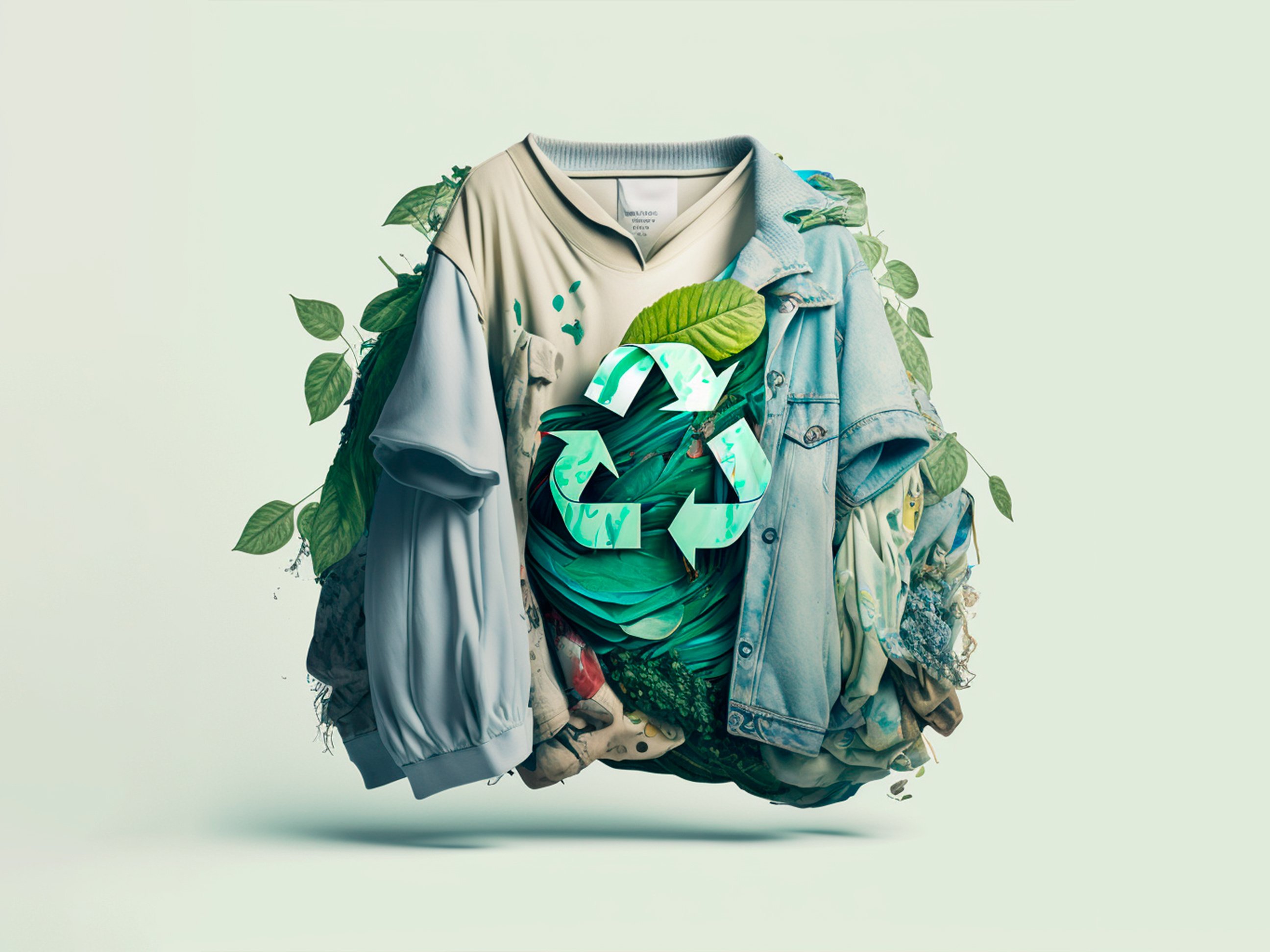Keep Ahead of the Curve by Checking Out Ingenious Fashion Patterns
In a market as dynamic as style, staying in advance includes even more than simply adhering to existing fads-- it requires an expedition of technology. Smart fabrics, as an example, are changing garments into functional work of arts, while 3D printing is transforming design procedures with its customizable, waste-reducing capabilities. As sustainability ends up being a foundation, advancements like environmentally friendly products and round style practices are improving ecological responsibility - Cape Town Sustainable Fashion. In addition, the merging of innovation and fashion advertises a brand-new period of consumer interaction. How, then, can these emerging patterns redefine the future of fashion, and what effects do they hold for brands seeking to prosper in this developing landscape?

Welcoming Smart Textiles
Recently, the apparel industry has actually witnessed a transformative shift with the integration of smart textiles, a cutting-edge technology that blends technology with material. This evolution stands for not just a combination of appearances and functionality however additionally a considerable leap towards sustainability and customization in fashion. Smart fabrics, additionally referred to as e-textiles, installed innovative electronic devices such as sensing units and conductive threads within the textile, enabling garments to engage with the atmosphere or the user.
These fabrics are developed to check physiological specifications, such as heart rate or body temperature level, offering real-time health analytics. Beyond wellness applications, wise textiles are likewise being used for flexible apparel, which can alter shade or pattern in response to environmental stimuli, therefore using a vibrant fashion experience.
Moreover, the development of energy-harvesting fabrics that produce power from activity or sunshine is paving the way for self-sufficient wearable technology. This development is interesting eco mindful consumers and designers aiming to reduce the ecological footprint of style. As research and growth in this field advancement, clever fabrics are anticipated to come to be increasingly widespread, reshaping the landscape of modern fashion with their multifunctional capacities.
The Surge of 3D Printing
Transforming the production landscape, 3D printing has arised as a game-changer in the fashion business. This innovative technology has actually made it possible for developers to push the limits of creative thinking, generating intricate and personalized garments that were previously unbelievable. By leveraging electronic design and additive production, 3D printing facilitates the production of complex geometries and patterns, permitting designers to try out new appearances and structures.
A notable benefit of 3D printing in vogue is its capability to produce on-demand, decreasing waste and decreasing inventory needs. This efficiency not only enhances production processes yet additionally enables quick prototyping, making it possible for developers to bring their visions to life in a much shorter timeframe. Moreover, 3D printing sustains personalization somewhat unparalleled by conventional approaches, offering one-of-a-kind designs and individualized fits tailored to individual customer preferences.
The rise of 3D printing has additionally democratized fashion, making it accessible to arising developers that can now fabricate top notch pieces without significant monetary investment in typical manufacturing facilities. As technology remains to advancement, the garment industry is positioned to harness the full possibility of 3D printing, discovering new products and strategies that will certainly redefine how fashion is conceived and produced.
Lasting Fashion Advancements
As the apparel industry comes to grips with the pushing need for ecological duty, sustainable style technologies have arised at the leading edge of transformative change. The growing understanding of ecological impact has actually fueled a change in the direction of even more eco-conscious practices and materials. Designers and brand names are now focusing on sustainability, including techniques that minimize waste and minimize carbon footprints.
One substantial advancement is the increase of circular fashion, which highlights recycling and upcycling to extend the lifecycle of garments. This technique not only reduces waste however likewise encourages consumers to take on a more conscious method to clothes consumption. In addition, using lasting products, such as organic cotton, hemp, and recycled polyester, has actually acquired traction. These materials require much less water and power throughout production, considerably decreasing environmental impact.
Another breakthrough depends image source on the adoption of ingenious dyeing methods that utilize waterless procedures or natural dyes, thereby decreasing the substantial amounts of water and chemicals typically utilized in fabric dyeing. In addition, innovations in biotechnology have resulted in the creation of lab-grown leather and fabrics, offering cruelty-free and eco-friendly alternatives to standard materials. Through these pioneering initiatives, the fashion business is making significant strides towards an extra sustainable future.

Tech-Integrated Clothing
Tech-integrated clothing stands for a cutting-edge combination of style and modern technology, improving exactly how people engage with their clothing. This cutting-edge domain is marked by the inclusion of wise textiles and ingrained digital components, enhancing both functionality and aesthetic charm. From fitness trackers embedded in sports apparel to warmed jackets controlled through smartphone apps, tech-integrated apparel provides customers unprecedented comfort and flexibility.
Introducing brand names are driving this fad, concentrating on producing garments that respond to ecological stimuli or user commands. As an example, some garments can transform color or pattern in feedback to temperature level changes, while others include biometric sensors to keep an eye on health metrics like heart price or stress degrees. The seamless combination of modern technology right into textiles additionally encompasses look at here now environmental sustainability, with efforts to establish self-cleaning fabrics or garments that adjust to weather problems, thus minimizing the requirement for multiple layers.
Moreover, the arrival of wearable modern technology is not simply restricted to clothes but expands to devices like watches and glasses, further expanding the extent of tech-integrated style. As the industry remains to innovate, the potential for modification and personalization in clothing grows, providing consumers distinct, tech-enhanced fashion experiences that provide to their individual requirements and choices.
Future of Virtual Fashion
In recent times, the future of virtual style has actually become a transformative force within the industry, leveraging improvements in electronic innovation to redefine just how fashion is produced, experienced, and consumed. By integrating augmented fact (AR), digital fact (VR), and 3D layout tools, developers can currently craft immersive and interactive experiences that transcend conventional style borders. Digital style permits for the development of garments that exist entirely in electronic environments, providing endless opportunities for innovation without the restrictions of physical manufacturing.
This electronic shift not only provides opportunities for creative expression but likewise addresses sustainability problems inherent in conventional style techniques. Cape Town Sustainable Fashion. By eliminating the requirement for physical resources, online fashion minimizes waste and reduces carbon impacts. Moreover, the surge of virtual fashion lines up with the raising customer need for one-of-a-kind and individualized experiences, as online garments can be personalized and tailored to private preferences with ease

Conclusion
The fashion industry's future lies in the integration of lasting practices and innovative technologies. Digital style is poised to redefine consumer interactions.
In current years, the fashion sector has actually seen a transformative shift with the integration of clever fabrics, a sophisticated advancement that blends modern technology with fabric.As the style market grapples with the pushing requirement for ecological responsibility, lasting fashion innovations have actually emerged at the forefront of transformative change.In recent years, the future of digital fashion has actually emerged as a transformative force within the sector, leveraging advancements in digital innovation to redefine just how style is produced, helpful resources experienced, and consumed. The surge of virtual style aligns with the enhancing customer demand for customized and distinct experiences, as virtual garments can be personalized and customized to specific preferences with ease.
The fashion market's future lies in the assimilation of sustainable practices and ingenious technologies.